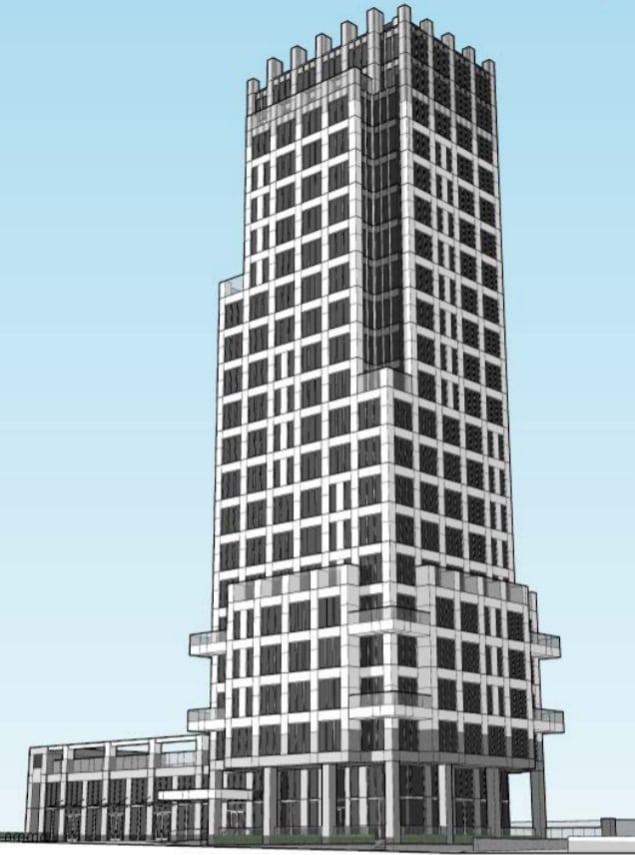
January 10, 2121
Dear HRM Planners, Mayor and Council
RE: Cancel the Proposed WSP high-rise- Case 22927
The proposed Westwood high-rise tower at 2032-2050 Robie Street has already been turned down by HRM Mayor and Council. Height for this location was to be restricted to 6-storeys. Council’s decision to allow a Development Agreement is discretionary and should be cancelled. It is effectively raising the dead. This Development Agreement not only denies the earlier council decision and staff recommendations to limit the height to 6 storeys, it makes a mockery of public participation by voiding the historic and more recent input of citizens.
Values reflected by statements such as Councillor Smith’s June 2019 motion “In recognition of the substantial investment made in the preparation of a planning applications for the site located at 2032- 2050 Robie Street, Halifax” beg the question whose interest are Mayor, Council and staff representing? The owner’s investment of money in thinking about what to do with their land is not a legitimate basis for approving a project.
Are residents of the area being given recognition for their substantial investment in their homes, livelihoods, neighbourhoods, community services and time to participate in HRM planning consultations and processes? Regulations and policies put in place under the Regional Plan through the efforts of Councillor Nick Meagher in the early 1990s were intended and did restrict high-rise developments so as to protect the Halifax Common and the Quinpool Road Business district. These had the full support of the area residents and merchants. This development is not necessary and will cause harm.
Necessity: The Willow Tree Group found that mid-rise (five-storey) development along Quinpool Road would allow for 2,500–2,800 new bachelor, 1-, 2- and 3-bedroom residential units. Distributed density with multiple developers is a form of gentle/hidden density and in-fill that is now the preferred form for getting densification done right as determined in a 2020 report by Ryerson University’s City Building Institute—”Density Done Right”—distributed density with mid-rise, townhouses and has multiple advantages over high-rises which in fact contribute to “tall and sprawl”. (See attatchment.)
Harm: Objections from staff and council against the original proposal included: property is located mid-block; backs on the existing low-density buildings on Parker Street; frontage only on a single street; shallow property depth; shadows on the adjacent Commons to the east; contextual fit of the proposed building heights; massing of the buildings; setbacks; spacing between towers; density.
To these could be added: parking, traffic, congestion, pedestrian safety and air pollution associated with vehicular emissions; neighbourhood stability; wind and shade; noise and privacy; property values and housing affordability; concentration of rental market to the exclusion of smaller developers; greenhouse gas emissions associated with demolition, construction and operation; over concentration of development in a single area rather than distributed; disrespect for meaningful public participation and public process; mismatch between populations density and provision of services (water, waste water etc)
Cumulative Impact: These aforementioned problems are not all single issues about the one development but many should be considered cumulatively along with the two other towers on this block, the Atlantica Hotel and Dexel building south of Quinpool, the unknown QEII Redevelopment and the unrevealed St Pat’s High School site.
That is how do these all work together? What is the desired density? What is the cumulative effect of shadow and wind on the Halifax Common, Cogswell Park and the neighbourhood? What is the cumulative impact of the vehicles associated with all of these developments within close proximity of one Halifax’s busiest intersections and hospital emergency entrance and exit? What is the impact on affordable housing in the area-especially Parker Street where 12-14 buildings seem to be now zoned as a future service lane?
We remind you that at the public hearing for APL’s 20-storeys there were ~1039 submissions in opposition and dozens of members of the public who spoke against that development. And just prior to the public hearing an independent Corporate Research Associate poll indicated that the majority of HRM residents (52%) supported 16-storeys or less with only 1/10 of those surveyed supporting the 25-storey option. Despite this opposition Mayor and Council approved a 25-storey building. Adding this 23-storey Westwood proposal would form a wall of high-rises, standing between the unwanted 25- storey building and next to the Welsford high-rise.
Although urban green space plays a huge role in mitigating the effect of climate change and nature improves mental and physical well-being HRM’s Centre Plan is not creating any new public green space for the Peninsula. It should therefore not consider permitting further degradation of either the Halifax Common or Cogswell Park with more shade, wind, noise, blocked views, traffic, pollution, for a project that does not add anything to the public realm but only takes full advantage of over-taxing the public’s socially provided greenspaces.
Please do not approve this proposal. Please take this as an opportunity to re-think the Centre Plan for this site.
Thank you,
Peggy Cameron, Co-chair, Friends of Halifax Common
See also: Open letter to Premier Stephen McNeil: Cancel the Lloyd Hines parking garage
With a special thanks to our generous donors who make publication of the Nova Scotia Advocate possible.
Subscribe to the Nova Scotia Advocate weekly digest and never miss an article again. It’s free!




Honestly this mid-rise development looks great, its certainly not a skyscraper lol! The arguments made that oppose it are poor and only further a “culture of defeat/NIMBY” narrative. Halifax is finally growing and becoming a destination people want to be in. Robbie street is a main road in Halifax, it’s time people who live in the urban core start realizing that.